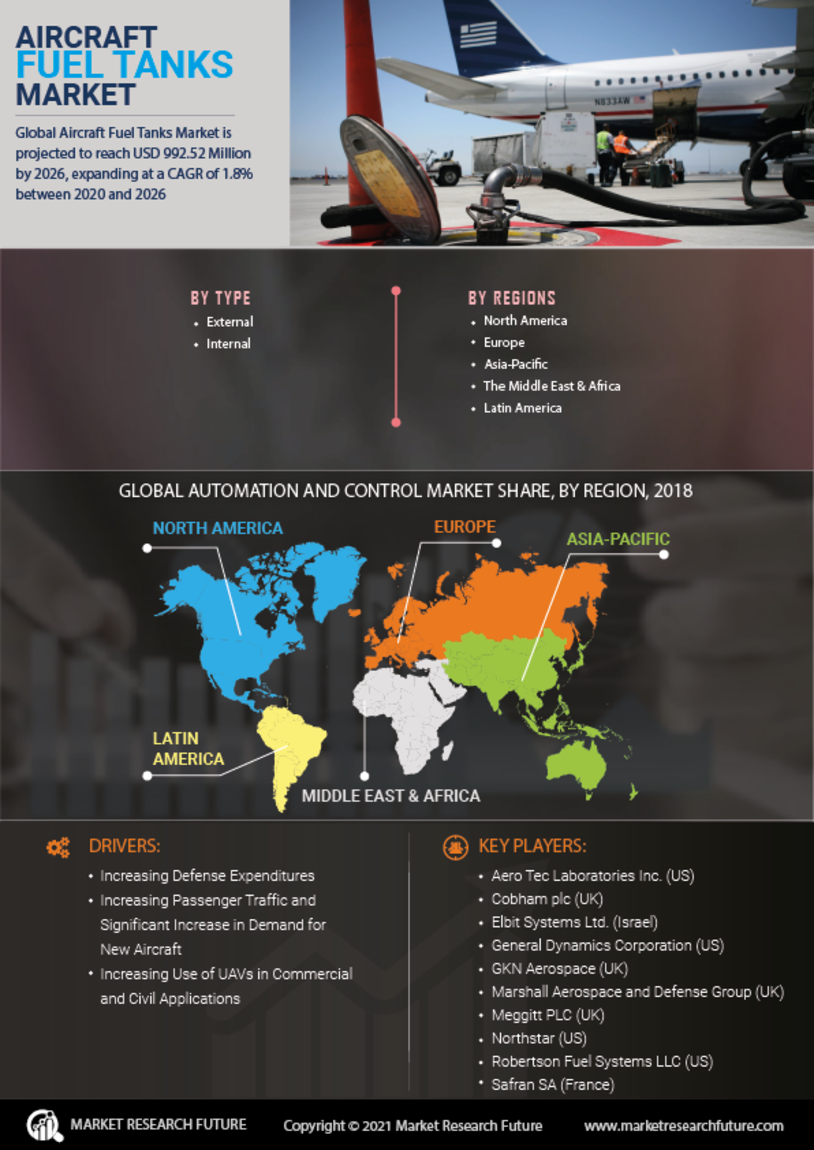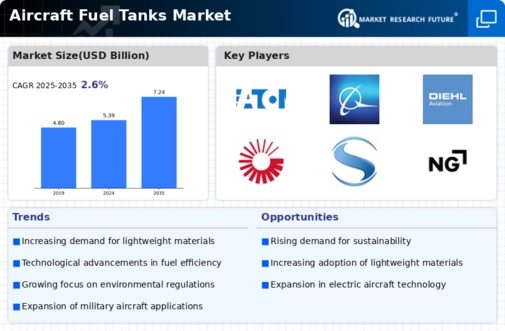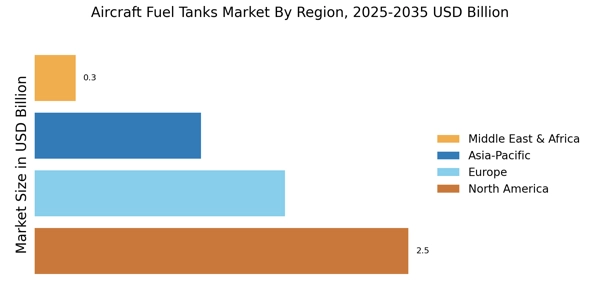Sustainability Initiatives in Aviation
Sustainability initiatives are becoming increasingly prominent within the Aircraft Fuel Tanks Market, as stakeholders seek to minimize environmental impact. The aviation sector is under pressure to reduce carbon emissions, and fuel tanks play a critical role in this endeavor. Manufacturers are exploring biofuels and alternative energy sources, which require compatible fuel tank designs. The shift towards sustainable aviation fuels (SAFs) is expected to influence the market significantly, with projections indicating that SAFs could account for up to 30% of aviation fuel by 2030. This transition necessitates the development of fuel tanks that can safely store and transport these new fuel types. Consequently, the Aircraft Fuel Tanks Market is likely to see increased demand for innovative solutions that align with sustainability goals, thereby driving market growth.
Modular Design Trends in Fuel Tank Systems
Modular design trends are emerging within the Aircraft Fuel Tanks Market, offering flexibility and efficiency in fuel tank systems. This approach allows for the customization of fuel tanks to meet specific aircraft requirements, which can lead to reduced manufacturing costs and shorter lead times. Modular designs enable manufacturers to produce standardized components that can be easily assembled or modified, facilitating quicker responses to market demands. Additionally, this trend supports the maintenance and upgrade of existing aircraft, as modular components can be replaced or enhanced without the need for complete overhauls. As the aviation industry continues to evolve, the Aircraft Fuel Tanks Market is likely to see increased adoption of modular designs, which may enhance competitiveness and innovation among manufacturers.
Regulatory Compliance and Safety Standards
The Aircraft Fuel Tanks Market is heavily influenced by stringent regulatory compliance and safety standards imposed by aviation authorities. These regulations are designed to ensure the safety and reliability of fuel systems in aircraft. Compliance with these standards often requires manufacturers to invest in advanced technologies and materials that meet or exceed safety requirements. For example, the Federal Aviation Administration (FAA) mandates rigorous testing and certification processes for fuel tanks, which can lead to increased operational costs for manufacturers. However, adherence to these regulations is essential for market entry and competitiveness. As safety standards evolve, the Aircraft Fuel Tanks Market must adapt, potentially leading to innovations that enhance safety while also improving efficiency. This dynamic creates opportunities for growth and development within the market.
Increased Demand for Fuel-Efficient Aircraft
The Aircraft Fuel Tanks Market is witnessing increased demand for fuel-efficient aircraft, driven by rising fuel prices and environmental concerns. Airlines are actively seeking to reduce operational costs, and fuel efficiency has become a key focus area. Aircraft manufacturers are responding by designing new models that incorporate advanced fuel tank technologies, which contribute to overall fuel savings. For instance, the introduction of next-generation aircraft, such as the Boeing 787 and Airbus A350, features fuel tanks designed to optimize fuel flow and minimize weight. This trend is expected to continue, with projections indicating that the market for fuel-efficient aircraft will grow significantly in the coming years. As a result, the Aircraft Fuel Tanks Market is likely to benefit from this shift, as manufacturers align their products with the evolving needs of airlines.
Technological Advancements in Aircraft Fuel Tanks
The Aircraft Fuel Tanks Market is experiencing a surge in technological advancements that enhance fuel efficiency and safety. Innovations such as advanced composite materials and smart fuel management systems are being integrated into aircraft designs. These technologies not only reduce weight but also improve the overall performance of fuel tanks. For instance, the introduction of lightweight materials can lead to a reduction in fuel consumption by up to 10%, which is crucial for airlines aiming to lower operational costs. Furthermore, the implementation of real-time monitoring systems allows for better management of fuel levels and leak detection, thereby increasing safety standards. As these technologies continue to evolve, they are likely to drive growth in the Aircraft Fuel Tanks Market, attracting investments and fostering competition among manufacturers.


















Leave a Comment